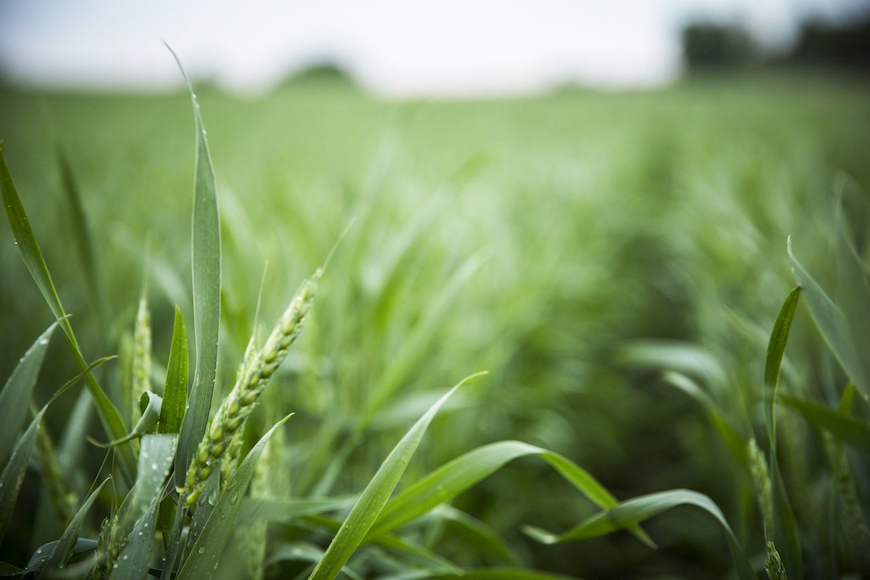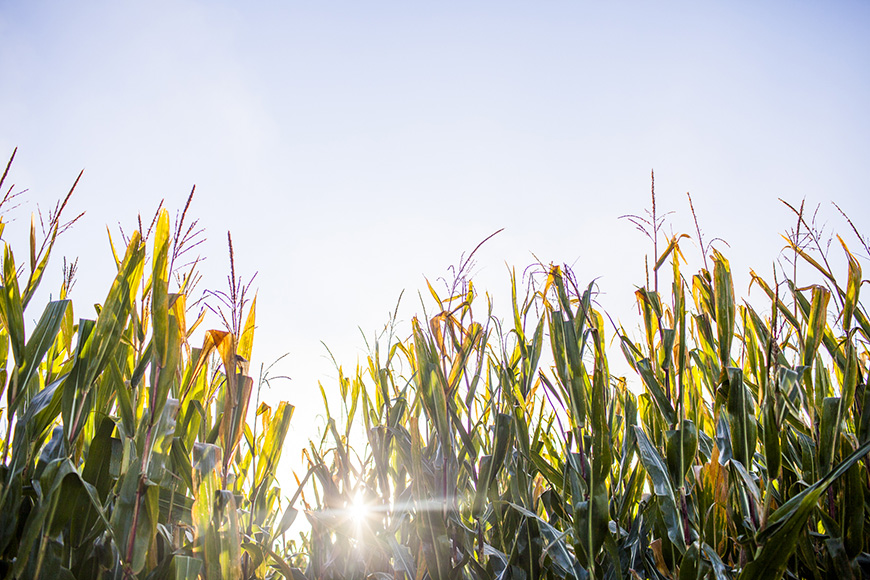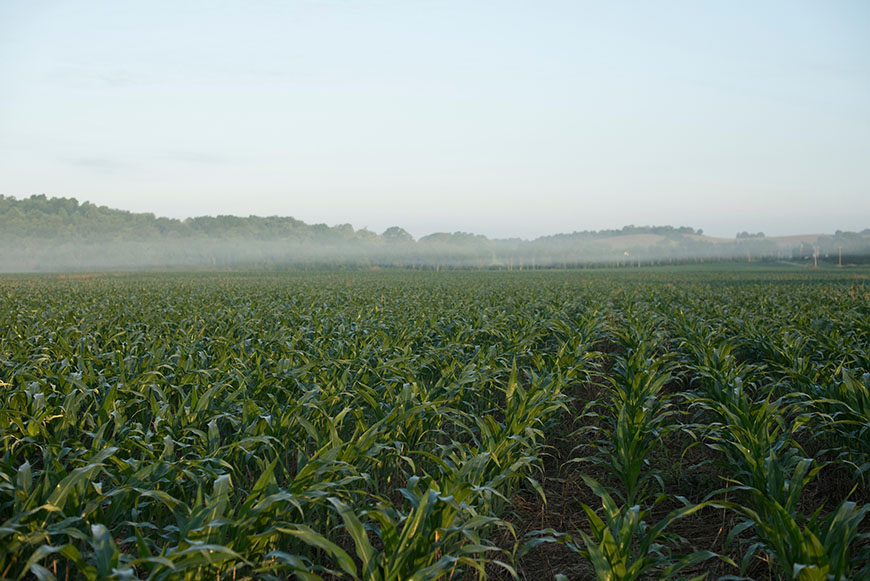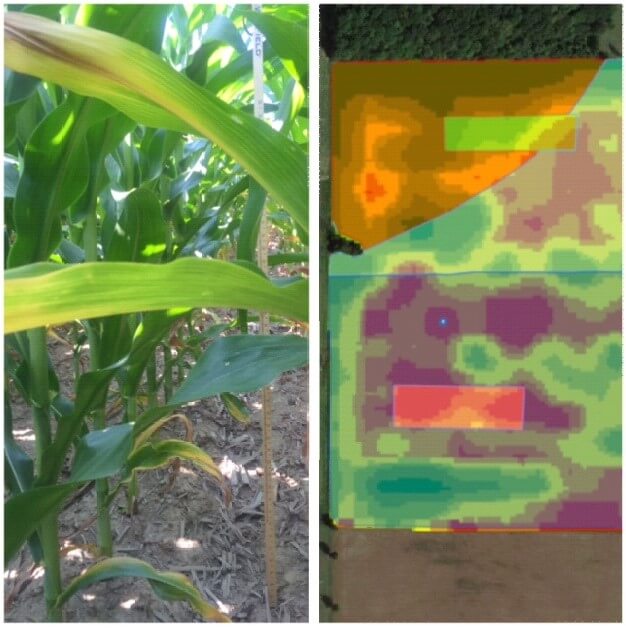Keep Close Tabs on Cotton Management

Cotton growers know that, even under ideal conditions, cotton requires intense monitoring and management throughout the season. Here are some tips to help guide in-season decisions.
Compact® PGR contains active ingredient mepiquat chloride, which helps the plant direct more food and energy toward fruit development rather than vegetative growth. This improves fiber quality and yield potential. Compact can also promote a reduction in boll rot and support better early boll retention and larger bolls.
Some farmers are using satellite imagery to guide variable-rate PGR applications to help remedy inconsistent stands, ask your agronomist to demonstrate this capability for you.
In addition to plants needing macronutrients like nitrogen, potassium and phosphorus, cotton plants also require micronutrients to optimize boll set and development. MAX-IN for Cotton NF micronutrient is an effective foliar-applied source of calcium, boron, manganese and zinc for optimal cotton fruit set and boll size. These micronutrients can be mixed easily with other plant nutrients and most crop protection products, and can be mixed with mepiquat chloride, mepiquat pentaborate and other PGRs.
Plants need calcium as well as boron for anthesis and early bloom. During early anthesis it’s especially important to aggressively protect first- and second-position fruiting bodies. In addition to MAX-IN for Cotton NF, MAX-IN Boron is a great choice for early-season applications at or just prior to early onset of flowering. It’s a great tank mix partner for your PGR, insecticide and/or herbicide applications. Both MAX-IN for Cotton NF and MAX-IN Boron help cotton flowering as well as boll set and development.
Talk with your locally owned and operated WinField® United retailer about how to manage your cotton crop to harvest the fiber length, strength and profit potential you desire.
All photos are either the property of WinField United or used with permission.
© 2022 WinField United. Important: Before use always read and follow label instructions. Crop performance is dependent on several factors many of which are beyond the control of WinField United, including without limitation, soil type, pest pressures, agronomic practices and weather conditions. Growers are encouraged to consider data from multiple locations, over multiple years and to be mindful of how such agronomic conditions could impact results. Compact, R7, NutriSolutions, MAX-IN and WinField are trademarks of WinField United. All other trademarks are the property of their respective owners.
Control insects
Last season, high thrip and plant bug activity challenged growers. Cotton seed treatments are one way to protect your crop from these pests. They typically last 21 to 28 days in a given growing season, providing protection against early-season insects like thrips. Mid- to late-season, cotton bollworms can become a problem and they have been very prominent in recent years. Increased resistance within the bollworm population has made scouting even more critical. Keeping worm feeding to a minimum will help you optimize yield and control the earliness of your cotton plants.Constrain plant growth
Your agronomist can help you determine how much plant growth regulator (PGR) you need to limit the growth of your cotton plants and manage for high fruit set and retention. Starting with smaller dosage amounts earlier in the season allows for better plant growth control compared to higher dosages later in the season.Compact® PGR contains active ingredient mepiquat chloride, which helps the plant direct more food and energy toward fruit development rather than vegetative growth. This improves fiber quality and yield potential. Compact can also promote a reduction in boll rot and support better early boll retention and larger bolls.
Some farmers are using satellite imagery to guide variable-rate PGR applications to help remedy inconsistent stands, ask your agronomist to demonstrate this capability for you.
Ensure proper nutrition in cotton crops
It’s critical your plants have the nutrients they need to achieve your yield and quality goals. Taking NutriSolutions® tissue, leaf and petiole samples will let you know if your cotton plants have adequate micronutrients or are coming up short. For example, 94% of cotton tissue samples have shown a potassium (K) deficiency over the past five years of NutriSolutions tissue sampling. In cotton, K affects fiber quality, length and strength. MAX-IN® K micronutrient is a foliar K product that provides an effective way to tweak plant nutrition in-season and give your plants a boost of K right when and where they need it most. It can be tank mixed with a PGRs or insecticides for a timely, efficient application.In addition to plants needing macronutrients like nitrogen, potassium and phosphorus, cotton plants also require micronutrients to optimize boll set and development. MAX-IN for Cotton NF micronutrient is an effective foliar-applied source of calcium, boron, manganese and zinc for optimal cotton fruit set and boll size. These micronutrients can be mixed easily with other plant nutrients and most crop protection products, and can be mixed with mepiquat chloride, mepiquat pentaborate and other PGRs.
Plants need calcium as well as boron for anthesis and early bloom. During early anthesis it’s especially important to aggressively protect first- and second-position fruiting bodies. In addition to MAX-IN for Cotton NF, MAX-IN Boron is a great choice for early-season applications at or just prior to early onset of flowering. It’s a great tank mix partner for your PGR, insecticide and/or herbicide applications. Both MAX-IN for Cotton NF and MAX-IN Boron help cotton flowering as well as boll set and development.
Manage your cotton crop week to week
Scout your cotton crop weekly over the entire season to monitor nutrition needs, PGR applications and insects. Cotton requires continual evaluation, and how you manage individual fields will differ because each has its own distinct soil type and management strategy.Talk with your locally owned and operated WinField® United retailer about how to manage your cotton crop to harvest the fiber length, strength and profit potential you desire.
All photos are either the property of WinField United or used with permission.
© 2022 WinField United. Important: Before use always read and follow label instructions. Crop performance is dependent on several factors many of which are beyond the control of WinField United, including without limitation, soil type, pest pressures, agronomic practices and weather conditions. Growers are encouraged to consider data from multiple locations, over multiple years and to be mindful of how such agronomic conditions could impact results. Compact, R7, NutriSolutions, MAX-IN and WinField are trademarks of WinField United. All other trademarks are the property of their respective owners.






